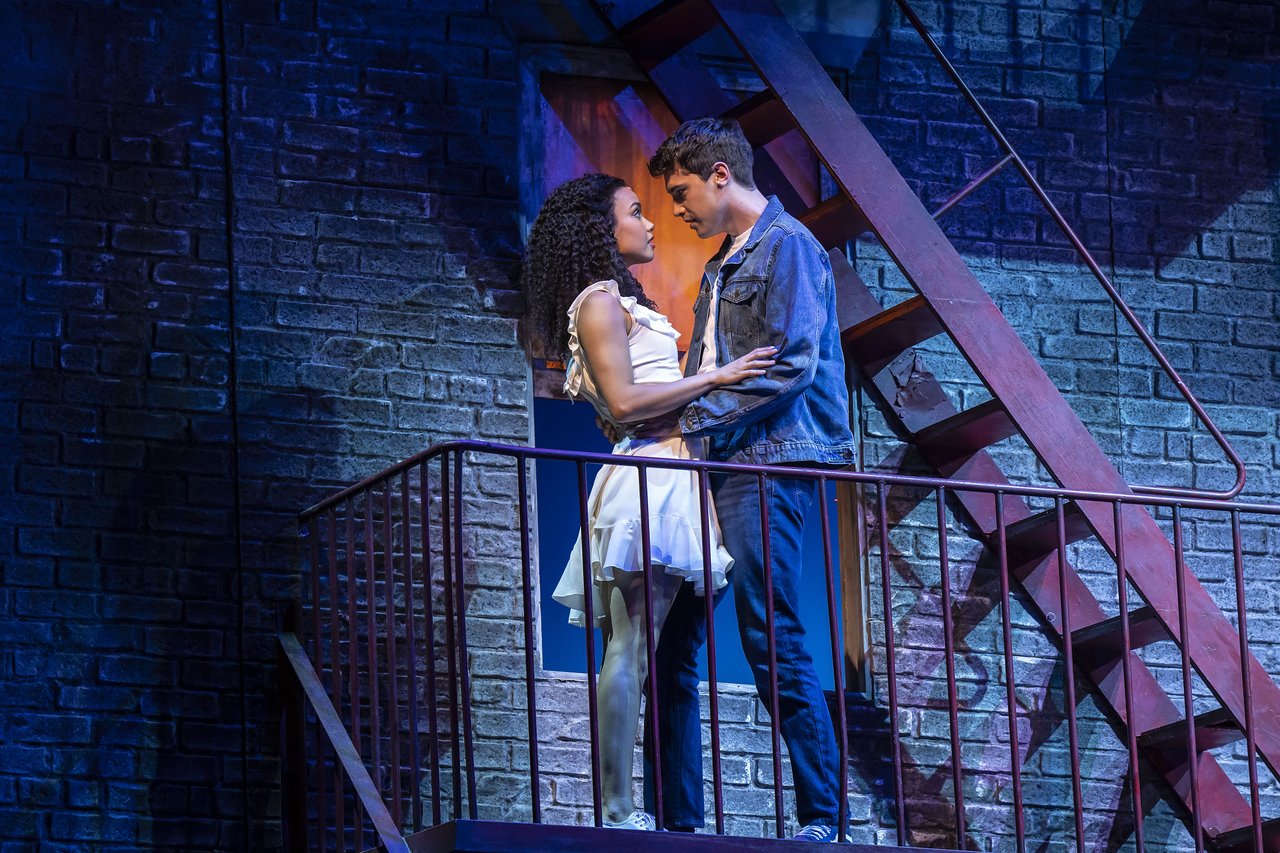Lyric’s ‘West Side Story’ in remount is red-hot, if perhaps safe
West Side Story: the Golden Age trifecta of acting, song, and dance. Originally premiering on Broadway in 1957, and followed by the well-renowned 1961 film, this take on Romeo and Juliet by way of racinated gang warfare has captured the hearts and minds of many generations of theatre-goers. And with the blockbuster 2021 Speilberg film, it seems this story will continue to inspire the next generation.
For me, though, West Side Story has been a footnote in the back of my head as something I should know but decidedly did not know, save for whatever memories were left from my high-school self reading the script as a part of a double feature with the original Shakespeare. I knew the basics of plot, and I had heard some of the songs—who could avoid those?—but I had never experienced a live production in its entirety.
Let it be said, Lyric Opera’s West Side Story was a wonderful first experience.
Though Lyric had mounted this particular production just four years ago in 2019, fresh excitement was buzzing through the audience as we all packed into the Krainik Theatre. The theatre, a piece of art in itself, was the perfect scale for the piece’s ambition, and the grandiose hyper-realism of the set (by Peter J. Davison) was an apt backdrop for the very real issues addressed in Francesca Zambello’s direction, despite the otherworldly stylized movement and choreography performed by the ensemble.
I can’t give enough praise to this production’s whole corps of dancers. Before a single person opens their mouth to sing, the audience is transported through movement into the Jets’ New York. Choreographer Joshua Bergasse (reproducing Jerome Robbins’s original Broadway choreography) tells the show’s story beautifully through the dancers and shows mastery over the many styles presented. Without the cast’s strong connection and exemplary execution of dance, the rest of the story would have come up short. Especially in a house as large as the Krainik, movement is needed to share the loud, exciting ensemble moments as well as the extremely intimate ones between Tony and Maria.
Exceptional standouts of the principal cast include Ryan McCartan as Tony and Amanda Castro as Anita. In McCartan’s Lyric debut, he brings fresh energy and yearning into his Tony, and his “Maria” fizzled with the very energy that Arthur Laurents, Leonard Bernstein, and Stephen Sondheim sought in combining acting, song, and movement into a whole. Deservedly, this particular number generated so much applause that the show was actually delayed from moving forward.
Castro also shows outstanding finesse in her movement, able to blend in with an ensemble of the Shark Girls (as in “America”) but also stand out while being partnered or alone. And Act Two’s dark turn is strengthened by her moments of vulnerability.
Kanisha Feliciano gave a strong, promising turn as Maria, going from sickly-sweet soprano to sickeningly desperate and grief-stricken. Her performance holds the potential to really dig into the nuance of the character, which I can only imagine has gotten more and more solid since opening night. Yurel Echezarreta as Bernardo, on the other hand, teems with both violence and grace as the Sharks leader, delivering severe dialogue juxtaposed with sharp balletic dance. His character embodies the duality of a suave, respected kingpin with the bubbling, righteous anger of someone disrespected in every other facet of his life.
As with every piece of theatre, you cannot help but reflect what you have seen onto the reality of the world. Zambello is understandably concerned about the division plaguing the United States right now, saying “What will finally allow us to muster the collective will to change our course?” While this message is clearly within the central theme of West Side Story, it is less clear what the audience should feel about it. We can live in that tragedy Maria ends up in, as she knows what it is to hate now. And we can mourn the loss of her innocence and the destruction of her friends, family, and lover, but what is empathy without a spark of passion in it? I wish the Lyric, having the resources and privilege to create such a beautiful story with world-class artists, would also step up to the conversation of giving this classic a sharper voice for the here-and-now, less so 1957. In their respective program features, both director Zambello and professor and author Dr. Carla Della Gatta speak on the problematic nature of Latinx stereotypes, the way West Side Story is told, and the fear of what is happening to America now, but what I want to know is: What is this extremely prolific theatre doing about it?
Seamless design, a talented cast, and brilliant choreography compel me to recommend this production to anyone. Everything about it is spellbinding, which makes the tragedy of the production all the more devastating. However, it also begs a question beyond “why this play now”, asking how do we continue to innovate and adapt the classics to serve the public discourse happening right outside those gilded doors.
West Side Story runs through June 25th at the Civic Opera House, 20 N. Wacker Dr. For thickets or more information, please call (312) 827-5600 or visit lyricopera.org.
For more reviews on this or other shows, please visit theatreinchicago.com.
